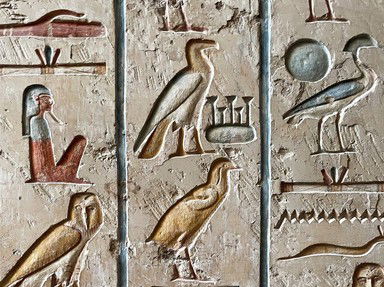
An Ancient Egyptian Lexicon Trivia Quiz
Ancient Egyptian Terminology
Ancient Egyptian influence has been so pervasive over history that we have numerous terms to describe various concepts about their civilization. Match these ten terms to their correct meanings.
This is a renovated/adopted version of an old quiz by author brdc
A matching quiz
by trident.
Estimated time: 3 mins.